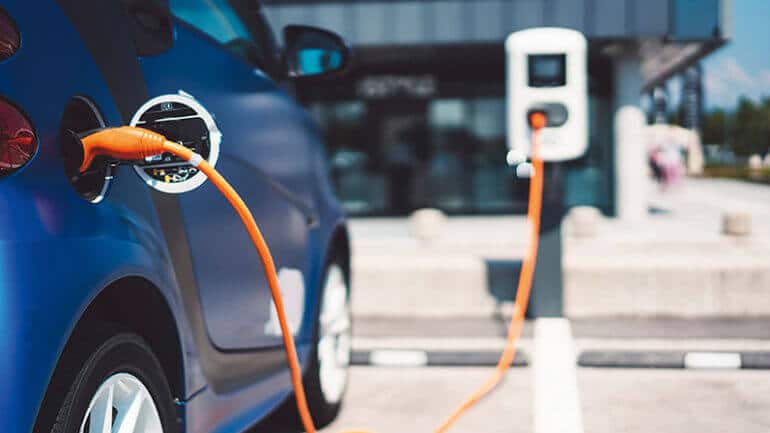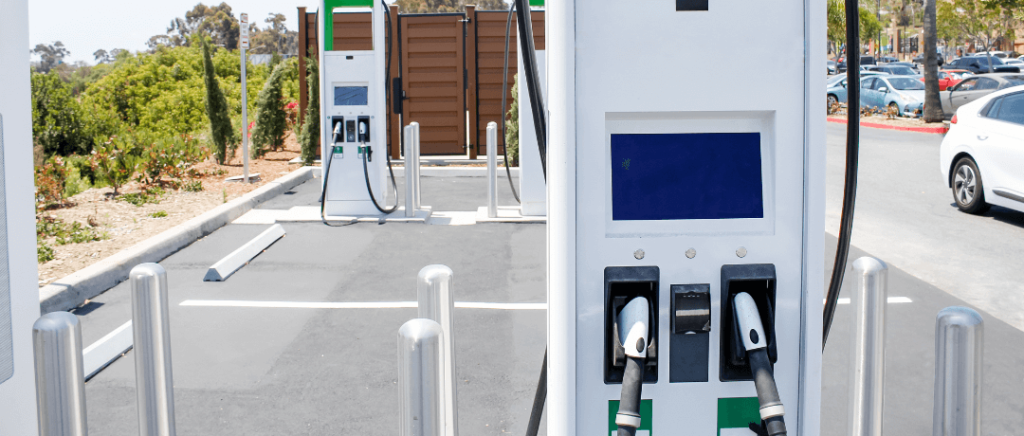your charging station
The right to take
What is the right to take?
Since November 1, 2014, following the publication of decree no. 2014-1302, the right to plug in has come into force. In short, it enables all co-owners, tenants and bona fide occupants to find a recharging solution for their electric vehicle, without going through a general meeting of the syndic.
Still too little known, decree 2020-1720 offers more possibilities and enables all electric vehicle users to have a recharging solution. Indeed, all residents of a condominium or single-family home, in a "conventionné" building, i.e. a building that depends on a condominium manager, can claim their right to a plug.
As of January 2021, the new decree extends the right to take. It is no longer an obligation. If the parking lot is "enclosed and covered", the space can be covered, enclosed or not, and outdoors.
Article L113-16 of the French Building Code (CCH) requires owners or condominium associations to guarantee the service provider access to the building's technical premises, so that he can carry out a feasibility study and draw up an estimate for the work to be carried out.
The AGM is optional
You don't need to register and vote on the subject at the General Meeting. It is a matter of informing the syndic, to enable the syndic to communicate and share the information with the other members of the General Meeting. No vote is therefore required.
You've got it. If the date of your work is scheduled after the General Meeting, the building manager cannot force you to postpone it. In this case, the building manager will report on the work already carried out.
Can the co-ownership refuse my right to a plug?
To assert this right, you must send a registered letter :
- The syndic if you are an owner
- The landlord if you are a tenant
Initially, we had to wait six months for a positive response from them. In the absence of a response from them, this was an agreement in principle.
From now on, once the notification has been sent, the owner or managing agent only has three months to oppose the project.
This is rarely the case, as refusal requires a serious or legitimate reason, which implies compulsory referral to the judicial court. This is article R113-7 CCH. In practice, the only situation where refusal is reasonable is when the tenant or owner decides to carry out the work himself, or if the condominium is already equipped.
Once the three-month period has elapsed, as opposed to the previous six months, without any court action or official response from the property manager, the tenant or owner implicitly agrees to start the work.
What you need to know to apply for the right to take
Our tips for your right to take claim
Before considering an individual solution for condominiums, there are a few things you need to know:
- A metering solution: so that electricity consumption linked to the user's terminal is billed independently of the building's common areas.
- Ask your neighbors. If one of your neighbors has already implemented an individual solution, you'll have an idea of the scope of the work involved. How can this be done? There must be a metering solution for him. You'll also need to find out whether the building's capacity is sufficient to accommodate your installation.
- Apply for your right to take early: as soon as you order your vehicle, notify your landlord or property manager.
- Check the installations around your home. Even if 90% of charging takes place at home. But, if your company has an infrastructure and you're not a frequent driver, you may not need a charging station.
- Test your vehicle first: if you have a plug-in hybrid, the charging station may not be useful. Likewise, if you don't drive much, it's best to check out the local charging stations.
To help you apply for your right to take, you can download our sample letters:
- If you are a tenant, you must address your request to your landlord. Click here to download our sample letter.
- If you're a homeowner, you'll need to send your request to your condominium manager. Click here to download our sample letter.
Assistance for which you are eligible
Anyone who installs a charging station, whether tenant or owner, is eligible for the Advenir bonus. You can also claim a tax credit.
- 500 tax credit
- The advenir bonus, which covers up to 50% of the installation cost (excluding VAT), up to a maximum of €600 per charge point.
Changes in eligibility conditions for individual charging points in apartment buildings :
From August 1, 2022, the conditions of eligibility for individual charging points in apartment buildings change.
From now on, only single-phase T2S charging points are eligible for the ADVENIR program.
A quick reminder: the rate and amount of aid for this target remain unchanged. It is still equal to 50%, with a maximum amount of €960 (excl. VAT) per recharging point.
Once the request has been made
Articles L113-17 and R 113-9 of the CCH stipulate that once the contract has been signed by the beneficiary and the service provider, a period of 2 months must elapse before the agreement is signed by the owner and the co-ownership manager.
The conditions of access and intervention of your installer to the common areas, and the management and maintenance of the electrical equipment determine the common conditions. In the absence of an agreement, you will have to take your case to court to have the conditions of access and intervention of the service provider chosen to install the bollard set.
Further information - Beev, your simple charging station installer
Conclusion
The " droit à la prise" (right to plug ) enables all electric vehicle users to find a home recharging solution, which is the case for 90% of private individuals, according to Adem. This article of law, combined with the Advenir bonus, makes the adoption of electric vehicles more accessible for private individuals whose vehicles are located in condominiums.
If you would like to find out more aboutsupport for the installation of charging stations for private individuals in 2024please consult our article on the subject.
































